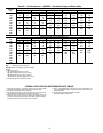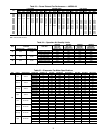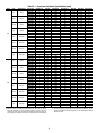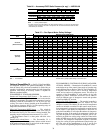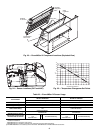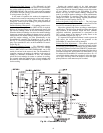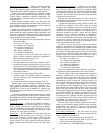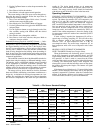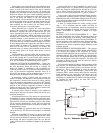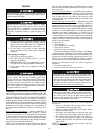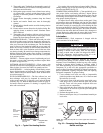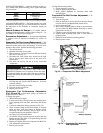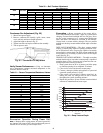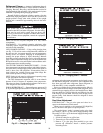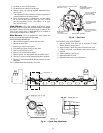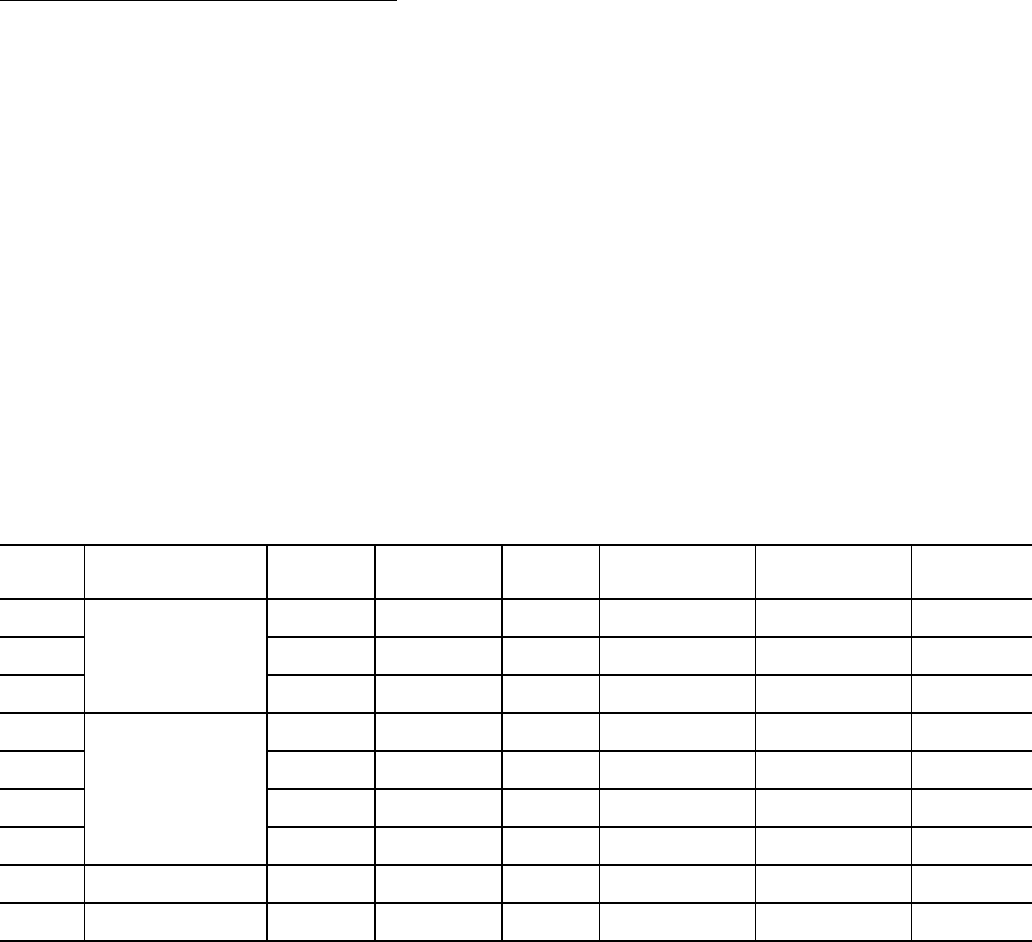
44
3. Use the Up/Down button to select the preset number. See
Table 29.
4. Press Enter to lock in the selection.
5. Press Mode to exit and resume normal operation.
The custom settings of the CO
2
sensor can be changed any-
time after the sensor is energized. Follow the steps below to
change the non-standard settings:
1. Press Clear and Mode buttons. Hold at least 5 seconds
until the sensor enters the Edit mode.
2. Press Mode twice. The STDSET Menu will appear.
3. Use the Up/Down button to toggle to the NONSTD menu
and press Enter.
4. Use the Up/Down button to toggle through each of the
nine variables, starting with Altitude, until the desired
setting is reached.
5. Press Mode to move through the variables.
6. Press Enter to lock in the selection, then press Mode to
continue to the next variable.
Dehumidification of Fresh Air with DCV Control
— Infor-
mation from ASHRAE (American Society of Heating,
Refrigeration, and Air Conditioning Engineers) indicates that
the largest humidity load on any zone is the fresh air intro-
duced. For some applications, a device such as a 62AQ energy
recovery unit is added to reduce the moisture content of the
fresh air being brought into the building when the enthalpy is
high. In most cases, the normal heating and cooling processes
are more than adequate to remove the humidity loads for most
commercial applications.
This makes the control of the of the dehumidification device
simple when using the enthalpy or differential enthalpy sensor.
The enthalpy sensor or differential enthalpy sensor is installed
on the equipment to determine economizer operation. The
high enthalpy signal from the enthalpy sensor or differential
enthalpy sensor can be used to turn on the outdoor air moisture
removal device any time fresh air is required for the space.
The energy recovery device should be sized for maximum
latent and sensible conditioning at maximum ventilation on a
design day. A calculation for leaving-air temperature on a low
ambient, low ventilation day should also be done to determine
the mixed-air temperature of the return and pre-conditioned
outside air. The design should produce an air temperature
somewhat near room conditions to prevent reheat of the air
mixture. The energy recovery device should be interlocked
with the heat to turn off the device when in the heat mode.
Operating Sequence
COOLING, UNITS WITHOUT ECONOMIZER — When
the thermostat calls for one stage of cooling, Y1 and G are en-
ergized. The indoor-fan contactor (IFC) and compressor con-
tactor(s) (C.A1 and C.B1 on three-compressor units or C.A1
only on two-compressor units), and outdoor-fan contactors
(OFC1 and OFC2 when outdoor temperature is above LTS set-
ting) are energized and the indoor-fan motor, compressor(s)
(A1 and B1 on three compressor units or A1 only on two-
compressor units), and outdoor fans controlled by OFC1 are
started. If the outdoor temperature is above the setting of the
low temperature switch, the outdoor fans controlled by OFC2
are also started.
If more cooling is required, the thermostat will call for a
second stage of cooling, energizing Y2. This will allow relay
CR1 to energize, which in turn energizes the compressor
contactor (C.C1 on three-compressor units or C.B1 on
two-compressor units). The second stage compressor (C1 on
three-compressor units or B1 on two-compressor units is then
started.
HEATING, UNITS WITHOUT ECONOMIZER
NOTE: The 48PG20-28 units have 2 stages of heat.
When the thermostat calls for heating, power is sent to W
on the IGC (integrated gas unit controller) board. An LED
(light-emitting diode) on the IGC board will be on during nor-
mal operation. A check is made to ensure that the rollout
switch and limit switch are closed and the induced-draft motor
is running. The induced-draft motor is then energized, and
when speed is proven with the hall effect sensor on the motor,
the ignition activation period begins. The burners will ignite
within 5 seconds.
If the burners do not light, there is a 22-second delay before
another 5-second attempt. If the burners still do not light, this
sequence is repeated for 15 minutes. After the 15 minutes have
elapsed, if the burners still have not lit, heating is locked out.
To reset the control, break 24-v power to the thermostat.
Table 29 — CO
2
Sensor Standard Settings
LEGEND
PPM —PartsPerMillion
SETTING EQUIPMENT OUTPUT
VENTILATION
RATE
(cfm/Person)
ANALOG
OUTPUT
CO
2
CONTROL RANGE
(ppm)
OPTIONAL
RELAY SETPOINT
(ppm)
RELAY
HYSTERESIS
(ppm)
1
Interface w/Standard
Building Control System
Proportional Any
0-10V
4-20 mA
0-2000 1000 50
2 Proportional Any
2-10V
7-20 mA
0-2000 1000 50
3 Exponential Any
0-10V
4-20 mA
0-2000 1100 50
4
Economizer
Proportional 15
0-10V
4-20 mA
0-1100 1100 50
5 Proportional 20
0-10V
4-20 mA
0- 900 900 50
6 Exponential 15
0-10V
4-20 mA
0-1100 1100 50
7 Exponential 20
0-10V
4-20 mA
0- 900 900 50
8 Health & Safety Proportional —
0-10V
4-20 mA
0-9999 5000 500
9
Parking/Air Intakes/
Loading Docks
Proportional —
0-10V
4-20 mA
0-2000 700 50



